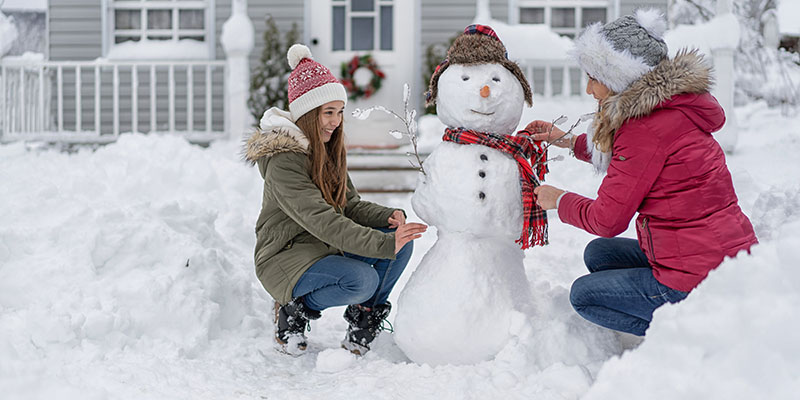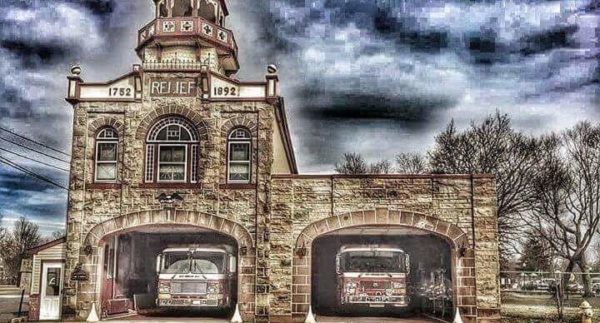
Looking outside your window at the dropping thermometer or stepping outside to be met by the brisk air are both reminders that it is time to dig the snow shovels and snowblowers out of the back of the garage. Being an electrician, when I think about home responsibility and safety during the wintertime, my natural tendency is to look at it from an electrical perspective. But as a homeowner, I also need to be considerate of best practices around fire safety. Changes to what we do outside and inside of our homes through the winter months present both electrical and fire safety risks that can be properly managed by both awareness and following the proper code requirements, in all codes that apply. As we transition into these winter months, there are requirements in both the NFPA 1 Fire Code and NFPA 70® National Electrical Code® (NEC®) that must be followed to ensure the safety of your home.
Winter just wouldn’t be winter without holiday lighting. Ensuring that the holiday lighting is listed and, where installed outdoors is rated for the application, is a great start. But often, the outdoor holiday lighting masterpieces installed in the coming months are also inclusive of extension cords and relocatable power taps (more commonly known as “power strips”) as well. As was the case with holiday lights, extension cords and relocatable power taps should also be listed and rated for the environment in which they are installed. Improper use of any or all of these components within holiday lighting not only has the ability to pose an electrical safety risk to the home, but a fire safety risk as well. NFPA 1 has code requirements, which are also relevant when it comes to electrical installations, that apply to both extension cords and relocatable power taps. Some of those NFPA 1 requirements being:
- Extension cords shall be plugged directly into an approved receptacle, power tap, or multiplug adapter and shall, except for approved multiplug extension cords, serve only one portable appliance. [1:11.1.5.1]
- Extension cords shall be maintained in good condition without splices, deterioration, or damage. [1:11.1.5.3]
- Extension cords and flexible cords shall not be affixed to structures; extend through walls, ceilings, or floors, or under doors or floor coverings; or be subject to environmental or physical damage [1:11.1.5.5]
- Relocatable power taps shall be listed to UL 1363, Relocatable Power Taps, or UL 1363A, Outline of Investigation for Special Purpose Relocatable Power Taps, where applicable. [1:11.1.4.1]
- The relocatable power taps shall be directly connected to a permanently installed receptacle. [1:11.1.4.2]
- Relocatable power tap cords shall not extend through walls, ceilings, or floors; under doors or floor coverings; or be subject to environmental or physical damage. [1:11.1.4.3]
When looking at the way a typical holiday lighting installation may be performed by those that may not be aware of these safety requirements, there are several things that stand out. Extension cords are not permitted to be plugged into other extension cords, rather they should only be plugged into an approved receptacle, power tap, or multiplug adapter. Because extension cords must be in good condition and free from damage, that rules out the extension cord that got caught up in the hedge trimmers during the summer and now has the damaged area wrapped in electrical tape. Relocatable power taps cannot be “daisy chained” by plugging into other relocatable power taps; they can only be plugged directly into a permanently installed receptacle. Both extension cords and relocatable power taps are not permitted to be installed where subject to environmental or physical damage. Furthermore, extension cords are not permitted to be affixed to structures, such as homes.
One area where both NFPA 1 and the National Electrical Code® (NEC®) align in their requirements is around the timeframe that holiday lighting can be installed. NEC section 590.3(B), which is directly referenced in NFPA 1 section 11.1.6.3.2, states that holiday lighting cannot be installed for more than 90 days. So, for individuals who get really excited about the holidays and install their holiday lights in early October, that means they will need to be taken down close to the first of the year to meet the 90-day requirement. Also from an NEC perspective, it is critical to ensure that all of your exterior holiday lighting is plugged into a GFCI receptacle that has been tested to be functional and working properly.
When the temperature in the house falls, the heat comes on. While likely the most common, gas-forced air furnaces are not the only way in which a home is heated. Boilers, heat pumps, and electricity are also utilized to heat homes. From an electrical perspective, electric furnaces, baseboard heat, plug-in space heaters, and electric fireplaces may also be utilized. With electrical equipment that is utilized to produce heat, it is important to understand that it puts a tremendous load on the electrical system. Circuits that operated normally throughout other parts of the year can now become overloaded when heating items, like portable space heaters, are plugged in during the winter months. When it comes to portable space heaters, it is also important to note that while it is heating your space, you need to maintain space between the heater and any combustible materials. In a home heating fires report published by NFPA in January 2021, fixed and portable space heaters were responsible for 81 percent of civilian deaths. That number is overwhelming considering the next closest equipment responsible for civilian deaths were fireplaces and chimneys at nine percent.
Because of the changes in the way homes are used when the cold weather sets in, both electrical and fire safety must be evaluated based on the change in use. As we move into these chilly months, it’s important to stay keenly aware of the changing environment and implement the safety measures that are necessary to keep your home safe. Winter is coming…
Please visit the NFPA public education page for more information on how to keep your home safe this winter and throughout the rest of the year.
